
Eisenia arborea
Southern Sea Palm, Double Pom-pom Kelp, Forked Kelp, Sea Palm
9 December 2024
Observations at Amphitrite Beach and Big Beach, Ucluelet, Vancouver Island, B.C., Canada.
Tide: receding to a 4.7 foot low at 13:09 PST (measured at Ucluelet Tidal Station)
Weather: Partly cloudy, wind SW 5 km/hour, low SW swell, humidity 87%, 6 ˚C
Moon: Waxing Gibbous (64.2%, 9 days); Next phase, Full Moon, 15 December 2024 at 1:01 am PST; Previous Phase, First Quarter, 8 December 2024 at 7:26 am PST.
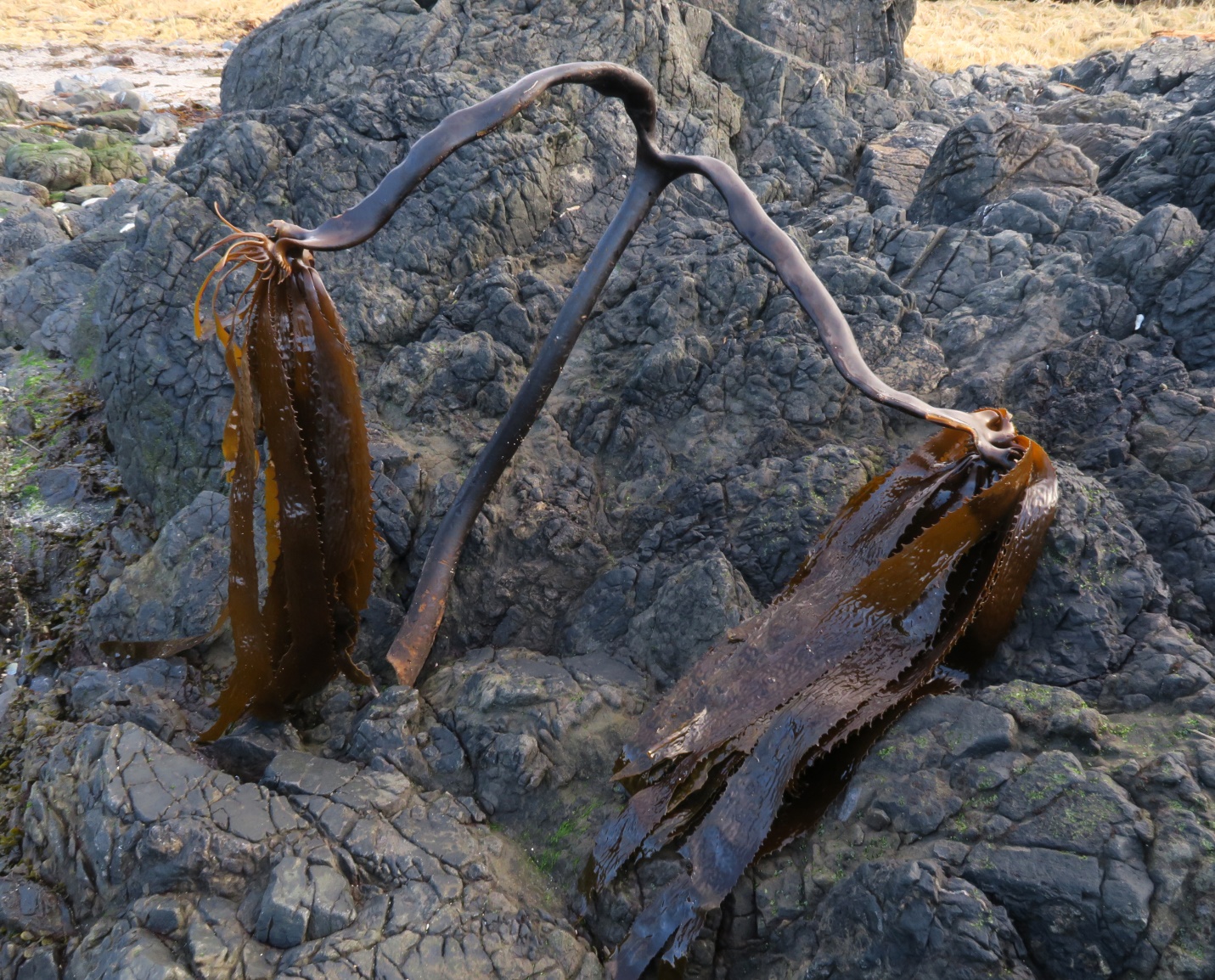
Figure 1: A cast ashore individual, this Eisenia arborea was very long-lived; its two ‘branches’ are the longest we’ve ever observed. This perennial kelp is at home mainly in subtidal waters, so it is not low tides but explorations after strong storms that can lead to finding some cast ashore individuals. Big Beach, Ucluelet, Vancouver Island, B.C., Canada. December 9, 2024. Photo ID 27744 ©Seaweedwhisperings.com
Person 1:
Robust and strong.
The individual we are interacting with IS big; 70 cm tall with 30 cm forks.
Forked.
At the top of the stipe is a single fork.
The forks are slightly twisted and curved – this gives them something special.
There are tassels of fronds at each of the two ends of the fork. They extend from a broad, somewhat flat terminus.
Each of the arms is strong enough to be independent.
Able to go off on different tangents at the same time.
Confident in its existence.
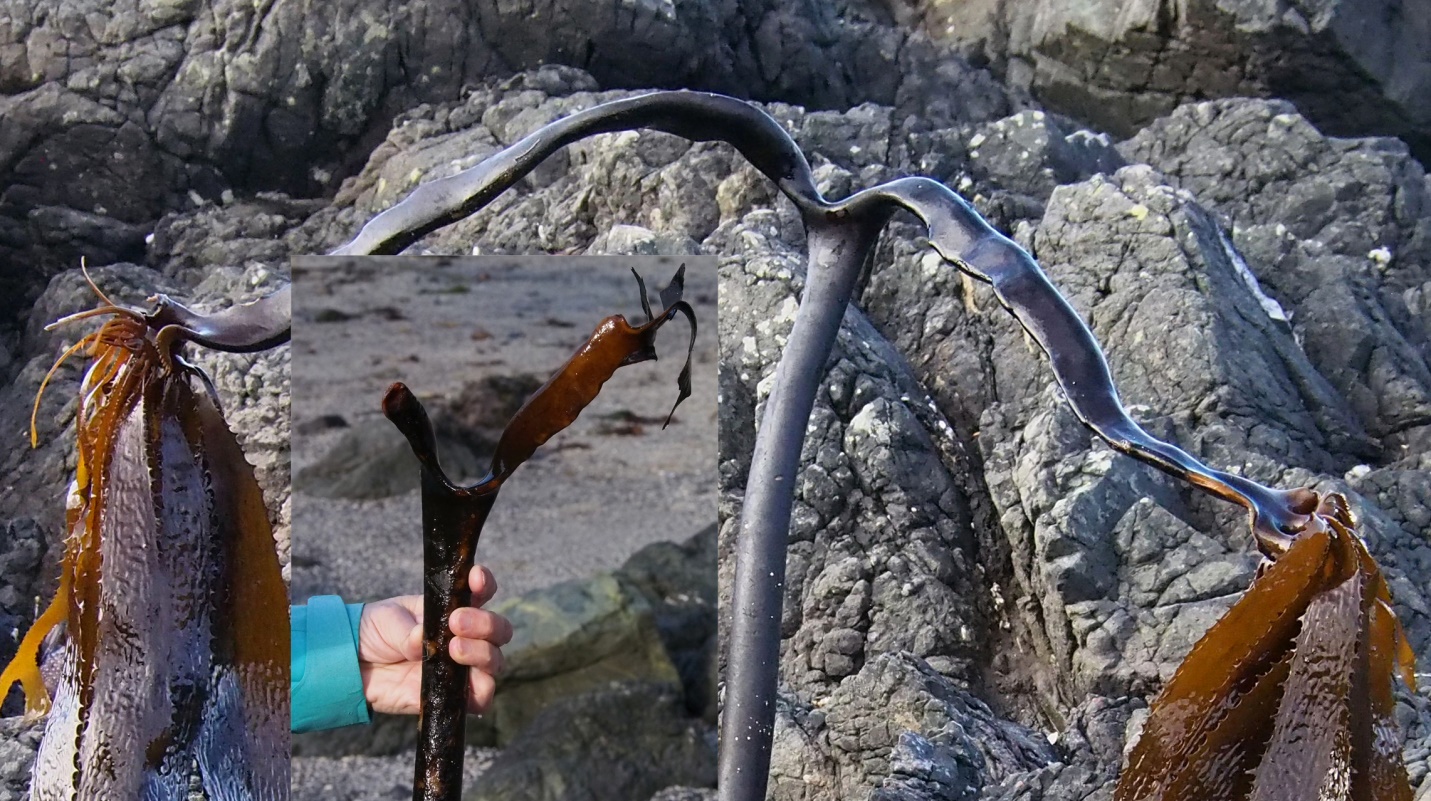
Figure 2: The ‘fork’ at the top of Eisenia’s solid stipe does not always support such very long ‘branches’ as the ones pictured in our cast ashore individual – compare the inset photo with larger example to see the size difference. No matter the size, once this seaweed is past the juvenile life stage, the fork and its twist, is distinctive and distinguishing among kelps. Big Beach, Ucluelet, Vancouver Island, B.C., Canada. December 9, 2024. Photo ID 27745 ©Seaweedwhisperings.com
Person 2:
Your distinctive form makes it easy to recognize you, Eisenia arborea. The strong fork at the top of your stipe is prominent. This arises from your tall (over a meter long), dark brown, cylindrical, solid, heavy, and in all ways very ‘substantial’ stipe. When this fork, this division occurs and growth moves off in two distinct directions, there is a flattening and with it also a kind of folding or semi twist in orientation.
Somehow the ‘fork’ with a dip to it and the strong ‘branches’ floating out to the side remind me of the human clavicle bones. In accord with this ‘anatomical analogy’ your clavicle-like ‘branches’ certainly do function to keep your arm-like blades connected to your body. I sense also there is considerable substance to this clavicle bone-like area – it even has a dip like one seen at the manubrium of the sternum where the two clavicles in humans meet. Along with this ‘substance’ there is a concentration of what I can only call your ‘will’ here, too. It makes me ponder: Is your breath issuing forth from nearby? Does your heart beat somewhere down behind this ‘bony’ structure, Eisenia? Is this the seat of your greatest motivating desires?
What emanates from your core seems to be physically concentrated here, and it seems to me that yours is a very strong will, with a steady heart that has been beating for years and years, supporting these two very distinct pom-pom ‘expressions’.
Yes, you do seem old, like you’ve seen many things in your history, and you endure – pretty much unchanged and unchanging. You’ve found what works and there is not much need for adjustment.
I thought of the word “primitive” when I sat with you on the beach, but that’s not really the right description at all. Simple, natural and unaffected are better words. Primitive carries the connotation of something not yet perfected, and Eisenia doesn’t have that feel – not at all.
You actually have a simple form, and one that has an inner impulse to create balance. At the top of your stipe you don’t invest all your glorious blade growth at one terminus, but divide it out in two opposing yet balanced positions. It’s almost like a pan balance scale, except your ‘pans’ don’t hang down but float out and up – and each side does seem to be keeping pace with the other’s growth. If it did not, the balance would be lost.
I felt this energy for a while..., and at first consideration it seemed as if this would require a type of constant vigilance. That Eisenia couldn’t lose sight of one side’s efforts and never become all consumed in explorations only on one side. This idea of needing to maintain balance at both sides at all times felt like it could be a bit arduous, however, when I sat with your energy a bit longer, Eisenia, I felt very clearly that for YOU this is no problem at all! It is effortless; it is what you simply and naturally do, completely without affectation.
So, if it could even be possible for you to race down one exploratory side path without your other side moving along in balance, too – in other words, if you tried to act without ‘balanced wholeness’, THIS is when you would struggle, feel at least out of sorts, or possibly highly stressed. To have one ‘arm’ somehow become overly large compared to the other, possibly by having one side severed or damaged, that would be a wound to your spirit – perhaps not a mortal one, but a deep one for certain; one that you’d soon want to correct.
Effortless balance is your normal way of being.
And at the ends of your branches..., all the blades, they are really full of life; they create two globes of only loosely organized and loving-to-be-moving ribbons of kelp. Each blade has rough teeth lining their margins and while they have irregular furrows texturing their whole surface there is a smoothness to the overall finish. The blades are somewhat translucent and glow with a warm golden caramel color when backlit. They are long and seem to grow with an exuberant drive to reach almost beyond themselves. It is like a thirst that isn’t quenchable; this constant desire to find what more there is to the world.
And possibly this thirst of theirs is what keeps the balance so effortlessly in place at both sides --- the insistence to be interacting with the world goes deep, to all their cells, and it is nourished equally. There isn’t competition, side to side, so much as there is the innate enthusiasm to engage and fully be alive!
And truly, with this kelp, all the ‘action’ is in the blades; the action is effortlessly demonstrated in their profusion.
But in those branches that support the blades, and at the ‘fork’ between them, and in the strong and sturdy stipe, here there is the feeling of ‘history’. The edges of your ‘branches’ are somewhat uneven – even very slightly scalloped, and this shape hints at things that have gone on before. There is indeed a feeling of ‘history’, history held and a legacy continually being updated with new chapters – you can feel this in the size and shape and energy of their being.
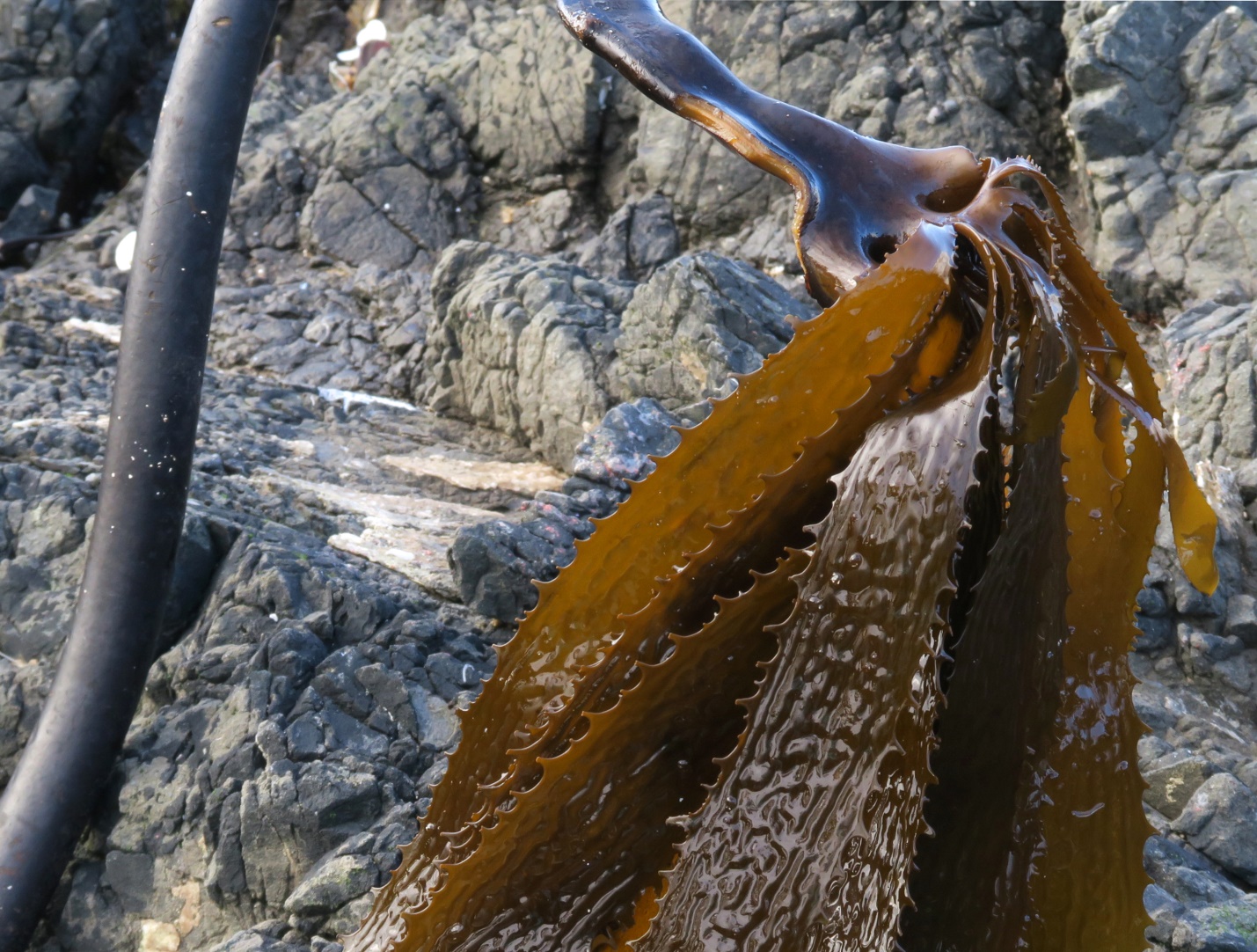
Figure 3: Furrows on the blades and prominent ‘teeth’ add dimensions for interaction with the ocean water. Big Beach, Ucluelet, Vancouver Island, B.C., Canada. December 9, 2024. Photo ID 27746 ©Seaweedwhisperings.com
Discussion:
Each arm is strong and independent, but both nourish the whole; they do not divide it or compromise it – they contribute.
They look strong, established. The strong twist at the ‘fork’ of their stipe suggested to us that they can deal with “twists” in life with ease. There is simply the feel of ease to their being and that very little really challenges that ease.
The teeth of the blades are like the ones of a crosscut or bow saw. They are prominent, distinctly visible even from quite a distance, and along with the wavy furrows on the blade surface they add another element to the look of Eisenia. We didn’t get the idea of these “teeth” as having the function to threaten to “bite” as in how a snarling wolf’s teeth may present. Instead it seems like they are, along with the furrows on the blade, morphological details developed by Eisenia so that they can interact with the world at a finer level. The many tooth edges and contours give many more millimeters of ‘exposure’ to the ocean waters and probably influence water movement across the blade, too. These teeth give them yet another way that they can “taste” / interact with / sense & experience the world.
This kelp looks somewhat like the structure of a pan scale, but the similarity stops there. Eisenia doesn’t actually weigh or measure things..., they are invested in living the fullest life possible, and there is no need to measure how this is going – they are simply busy living it. If one searches the internet for underwater photos of this kelp, you can see this trait portrayed. It was perceptible even on our cast ashore individual, but under water, it’s, “Wow” – the lively profusion of ‘life’ that Eisenia expresses is obvious. In fact, seen in its underwater habitat, the double pompoms all seem to merge into one; it is not even evident that there are two sources for the single mass of blades that radiate out.
Two sets of dancing fronds contrast with the solid stipe and established and sturdy fork. The stipe is very solid and heavy and anchoring and this feels in correct proportion to how active this seaweed is in engaging with life experiences. All the obvious “life” that is “in action” at the pompoms – with the many blades all reaching out various directions to seek light and create energy to fuel even more life action..., all that action does not appear to be very organized. However it does have a purpose and is committed to share what is experienced with ‘the whole’. The lack of organization and the clear split into two pompoms might lead one to think that the action of the blades is independently-minded or even competitive, but it is clearly not selfish or divisive – it is simply Eisenia’s way of remaining balanced while engaging with life so very fully. All experiences gained, from either pompom, or any blade, or tooth, or furrow – all are gratefully received by and added to the other treasures of life experience already held at Eisenia’s core.
In Eisenia arborea, the double pompom kelp, there is a balanced and enduring strength that is expressed with their obvious division into two – strength, not divisiveness. This is a joy to recognize.
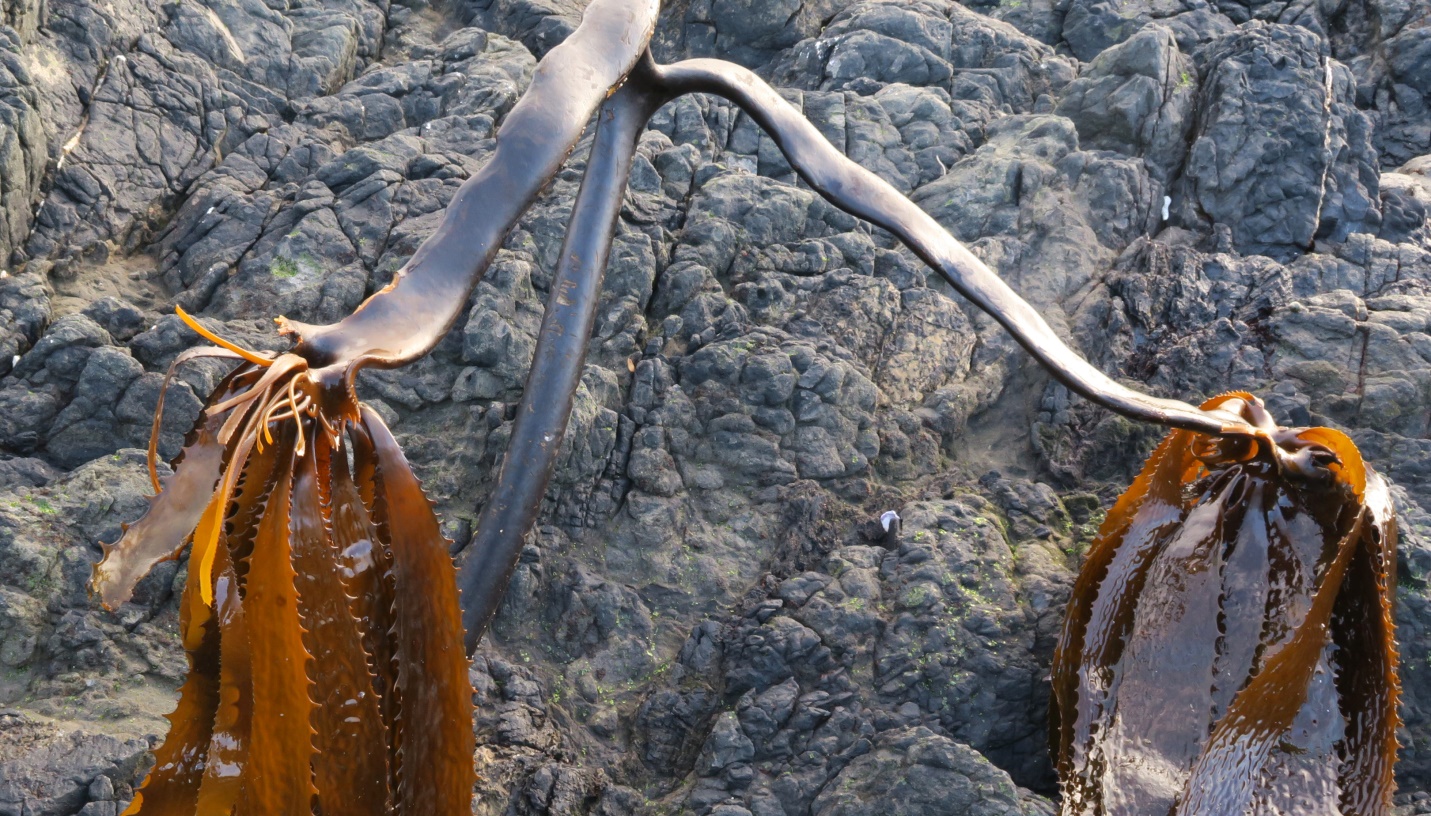
Figure 4: The branch tips are viewed here showing how the blades are arranged in scrolls, with the youngest ones looking like simple spikes and the mature ones fully exhibiting their furrows, strongly toothed margins and considerable length. Big Beach, Ucluelet, Vancouver Island, B.C., Canada. December 9, 2024. Photo ID 27747 ©Seaweedwhisperings.com
Biology & Natural History Information:
Description:
This perennial kelp has a rigid, solid, woody stipe, up to 1.5 meters long that arises from a sturdy holdfast of haptera. The stipe is cylindrical at the base and then ultimately becomes flattened near where it forks into two distinct branches. Each branch supports numerous sporophylls, spore-producing blades. The blades are arranged in scrolls, the youngest ones are simple spikes; as they age they become larger and progressively more distinct. Mature blades can be up to 40 cm in length and are textured / corrugated with irregular furrows and have strongly dentate margins. Young Eisenia look very different from adults; this seaweed changes morphologically drastically as it grows. Young Eisenia totally lack the distinct fork in the stipe which gives rise to one common name for this species, Forked Kelp. Their morphology consists of a short stipe that supports a single blade with teeth near the base and lateral, toothed marginal lobes.
Habitat:
Common on rock, seemingly preferring wave-exposed sites, extreme low intertidal and mainly subtidal but can project above the surface at low tide in some localities. This species often forms large aggregations / kelp forests on rock or tops of pinnacles.
Distribution:
Until the 1950’s this species was not known north of California, where its range is more or less continuous from Monterey, CA to Baja California, Mexico. Since then populations have been recorded along the west coast of Vancouver Island and Haida Gwaii.
Remarks:
On both sides of the Pacific, this species is the southernmost kelp representative. Questions remain unanswered as to the remarkably disjunct distribution of this species along the eastern shores of the Pacific – why are no Eisenia arborea found along the Washington and Oregon coastlines, for example? Hypotheses include low search effort in some regions, relict populations that survived the last glaciation, and possibly transport north from southern California during the sea otter fur trade era of the 1740’s to 1820’s.
Classification:
Class: Phaeophyceae
Subclass: Fucophycidae
Order: Laminariales
Family: Lessoniaceae
Genus: Eisenia
Species: Eisenia arborea Areschoug 1876
Former name(s):
Homotypic snynym: Ecklonia arborea (Areschoug) M.D.Rothman, Mattio & J.J.Bolton 2015
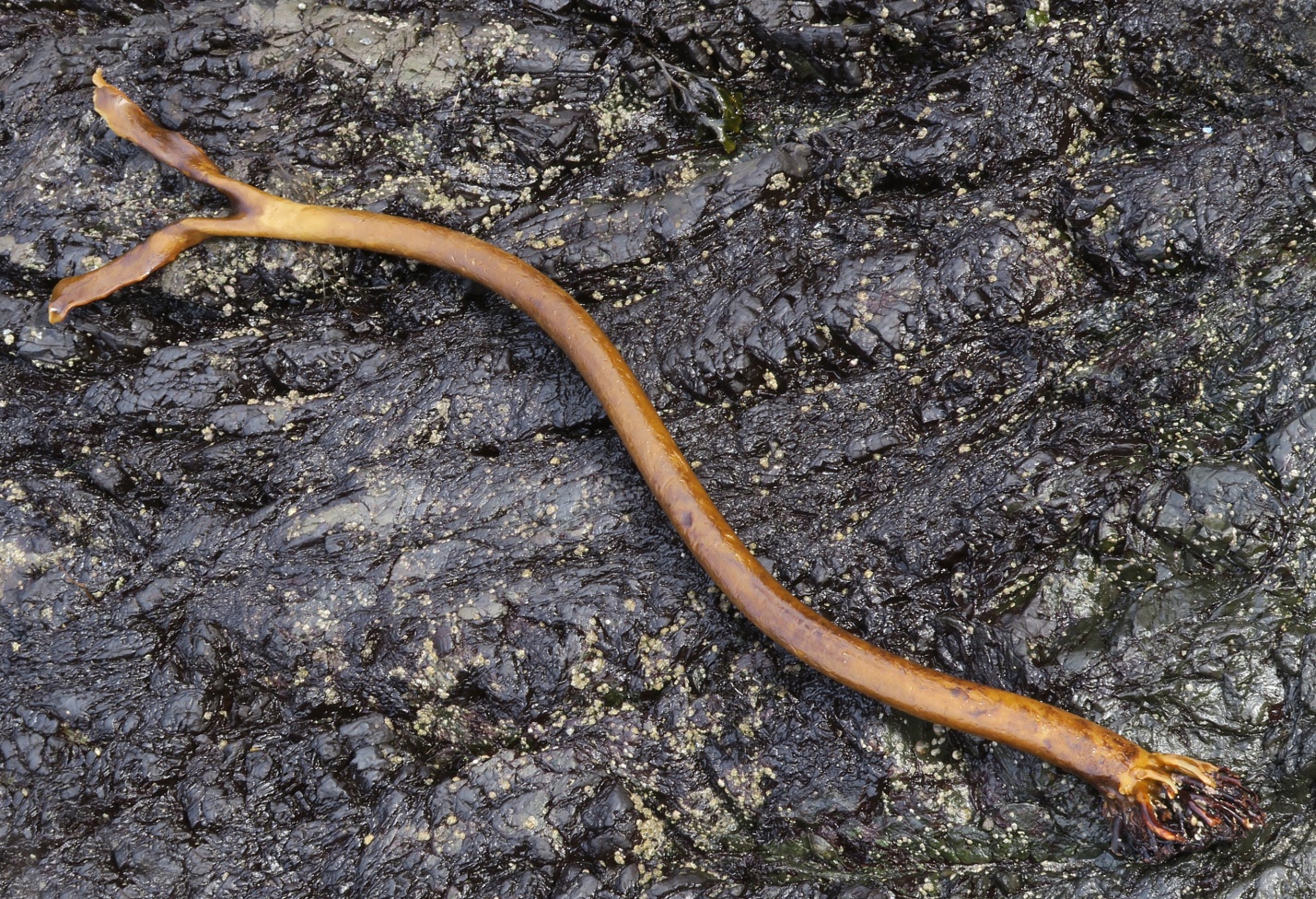
Figure 5: Even without seeing the blades or knowing the exact overall dimension of this algal “skeleton” the features that remain would lead you to easily identify this as Eisenia arborea. The holdfast, thick and solid stipe that is strongly and obviously forked at its top – these are all clear identification ‘giveaways’ for a mature individual. Amphitrite Beach, Ucluelet, Vancouver Island, B.C., Canada. December 9, 2024. Photo ID 27748 ©Seaweedwhisperings.com
![]()